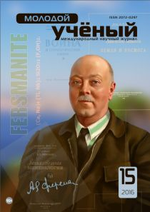Translating a phraseological unit is not an easy matter as it depends on several factors: different combinability of words, homonymy, polysemy, synonymy of phraseological units and presence of falsely identical units, which makes it necessary to take into account of the context. Besides, a large number of phraseological units have a stylistic — expressive component in meaning, which usually has a specific national feature. The afore-cited determines the necessary to get acquainted with the main principles of the general theory of phraseology. The phraseme and idioms types of phraseological units may be observed. A unit of constant context consists of a dependent and a constant indicator may be called a phraseme. An idiom is a unit of constant context which is characterized by an integral meaning of the whole and by weakened meanings of the components, and in which the dependent and the indicating elements are identical and equal to the whole lexical structure of the phrase. Any type of phraseological unit can be presented as a definite micro- system. In the process of translating of phraseological units functional adequate linguistic units are selected (by comparing two specific linguistic principles). These principles reveal elements of likeness and distinction. Certain parts of these systems may correspond in form and content (completely or partially) or have no adequacy. Complete conformities, partial conformities and absence of conformities are observed in translation of phraseological units. Complete coincidence of form and content in phraseological units is rarely met with.
e.g. Black frost / phraseme/– qorasovuq
To bring oil to fire/idiom/ – аlangagayog’ quymoq
To lose one’s head/ idiom/ – gangibqolmoq
Partial conformities of phraseological units in two languages assume lexical, grammatical and lexico- grammatical differences with identity of meaning and style, i.e. they are figuratively close but differ in lexical composition, morphologic number and syntactic arrangement of the order of words. One may find:Partial lexical conformities by lexical parameters/ lexical composition.
a) – To get out of bed on the wrong foot / idiom/ -chap yoni bilanturmoq
b) – To have one’s heat in one’s boots /idiom/-yuragiorqasigaketmoq
c) – To lose one’s temper / phraseme/-sabrichidamoq
d) – To dance to somebody’s pipe / idiom/-birovningnog’orasigao’ynamoq
Partial conformities by grammatical parameters
Differing as to morphological arrangement / number/
To fish in troubled waters / idiom/- loyqasuvdabaliqtutmoq
From head to foot / idiom/- boshdanoyoq
To keep one’s head /idiom/-o’ziniyo’qotmaslik
4. Differing as to syntactical arrangement
Strike while the iron is hot-temirniqizig’idabos
Egyptian darkness-qop-qorong’izimiston
Armed to teeth- tish-tirnog’igachaqurollanmoq
All is not gold that glitters- barchayaltiragannarsaoltinemas
Many English phraseological units have no phraseological conformities in Uzbek. In the first instance this concerns phraseological units based on realiae. When translating units of this kind it is advisable to use the following types of translation: a verbatim word for word translation, translation by analogy, descriptive translation.
Verbatum Translation is possible when the way of thinking / in thе phraseological unit does not bear a specific national feature.
To call things by their true names / idiom /-harnarsanio’znomibilanatamoq
Cold war / idiom/- sovuqurush
Translating by Analogyis a way of translating is resorted to when the phraseological unit has a specific national realiae.
You pull his leg / idiom/-Sizunimazaxqildingiz
Descriptive translation is translating phraseological units by a free combination of words is possible when the phraseological unit has a particular national feature and has no analogy in the language it is to be translated into.
1. To enter the house / phraseme /- parlamenta’zosi bo’lmoq
2. To cross the flour of the house / idiom/- birpartiyadanboshqapartyagao’tibketmoq
Roughly speaking, phrases are expressions whose meaning cannot be completely understood from the meanings of the component parts. Whereas it is possible to work out the meaning on the basis of knowledge of English grammar and the meaning of words, this would not be sufficient to work out that can mean
References:
- Salomov G. Tarjimanazariyasigakirish. T. 1978.
- Salomov G. Tarjimanazariyasiasoslari. T. 1983.
- Alan Duff (1989). The translator’s Handbook» Translation».







